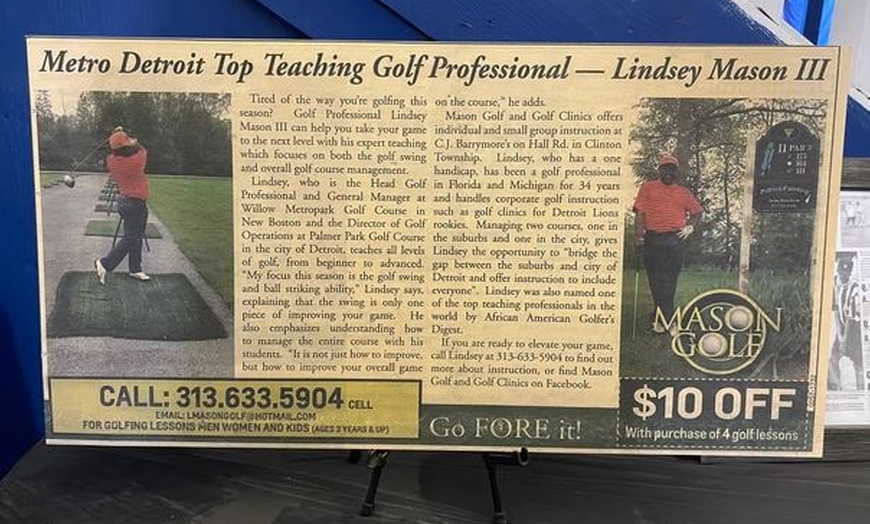Highlights
Golf instructor with over 30 years of experience shares his expertise at scenic Metropark locations for all ages and skill levels
About This Deal
Want to perfect your swing? Lindsey Mason III offers private golf lessons that cater to beginners and seasoned players alike. With options ranging from one to six sessions, both individuals and pairs can find something that suits their needs. Enjoy personalized coaching in a tranquil setting while honing skills under expert guidance.
What We Offer
-
One 60-Minute Golf Lessons for One
-
Six 60-Minute Golf Lessons for Two
-
Four 30-Minute Private Golf Lessons
-
Six 30-Minute Private Golf Lessons
Why You Should Grab This Offer
Experience professional golf instruction led by the highly regarded Lindsey Mason III at Willow Metroparks GC and Lake St. Clair Metropark. With more than three decades of teaching experience, he offers invaluable insights tailored to golfers of all skill levels. He is also an international PGA & Hall of Fame Member. The picturesque locations provide an ideal backdrop for learning while enhancing focus and relaxation during lessons. Whether you're looking for individual attention or want to share the experience with a partner, there's an option for everyone. Engaging in these comprehensive clinics will not only improve your game but also connect you with a supportive community of fellow golfers.
Golf is a game where every fraction of a second counts, and Lindsey’s expert guidance will help you make the most of those crucial moments. His lessons delve into the physics of the swing, teaching you how to maximize compression and backspin to achieve greater distance and accuracy. With a 4.8-star rating on Groupon, you can trust that Lindsey’s lessons are highly regarded by golfers of all levels. Elevate your game and enjoy personalized, effective instruction with Lindsey Mason III, and watch as your skills reach new heights.
Fine Print
About Golf Pro - Lindsey Mason III
Lindsey Mason III of MasonGolf Lessons and Golf Clinics has been coaching golfers of all ages and skill levels for over 30 years. And, it's not just his clients that sing his praises. Named one of America's top golf instructors by African American Golfer's Digest in 2015, Mason truly is a recognized expert in the world of golf instruction. Helming group golf clinics as well as private lessons, he helps golfers take their game to the next level, focusing on improving golf swings and helping his students devise holistic course strategies.








